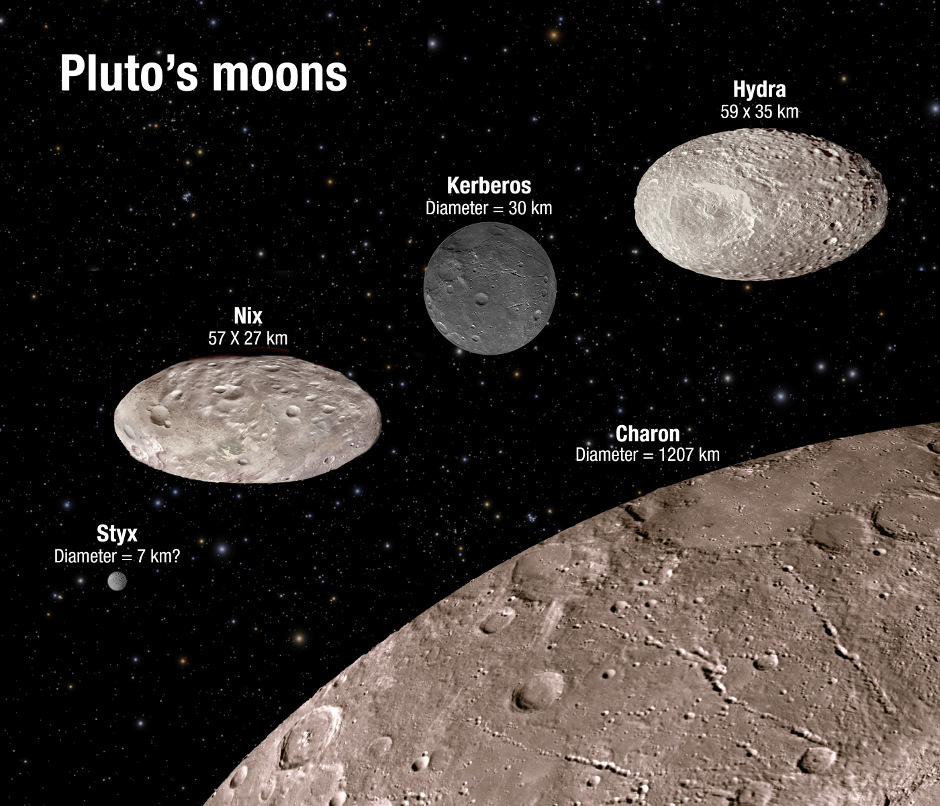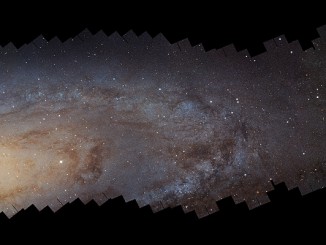
Almost every moon in the Solar System, including our Moon, rotates on its axis at the same speed as it orbits its parent body. It is for this reason that we always see the same side of the Moon facing us on Earth. On Pluto, however, astronomers have now discovered that there are no hidden sides to its moons.
In a surprising new study, it has been found that two of Pluto’s moons, Nix and Hydra, are in a chaotic rotation. This means that an observer on Pluto would not see the same face of the moons from one night to the next. For visitors on the moons themselves, things would get even more confusing, as every day would be a different length to the one that preceded it.
The other two moons studied, Kerberos and Styx, will likely be found to be chaotic too, pending further study.
“Prior to the Hubble observations, nobody appreciated the intricate dynamics of the Pluto system,” explains Mark Showalter of the Search for Extraterrestrial Intelligence (SETI) Institute in California, USA, main author of the study.
The chaotic motion of the moons is caused by the system’s two central bodies, Pluto and Charon. “These two bodies whirl around each other rapidly, causing the gravitational forces that they exert on the small nearby moons to change constantly,” explains Doug Hamilton, co-author of the study. “Being subject to such varying gravitational forces makes the rotation of Pluto’s moons very unpredictable. The chaos in their rotation is further accentuated by the fact that these moons are not neat and round, but are actually shaped like rugby balls!”
The movement of the moons in the Pluto–Charon system offers valuable insights into how planets orbiting a double star might behave. “We are learning that chaos may be a common trait of binary systems,” Hamilton continues. “It might even have consequences for life on planets orbiting binary stars.”
These images also showed that the moon Kerberos is charcoal-black in colour, a stark contrast to the bright white of the other moons. It was predicted that pollution from dust blasted off the satellites by meteorite impacts would coat the moons, giving their surfaces a homogenous look, but why Kerberos is black is a mystery.
The chaotic rotation of the moons was not the only surprise that arose from the study; Hubble’s monitoring also revealed a connection between the orbits of the three moons Nix, Styx, and Hydra.
“Their motion is tied together in a way similar to that of three of Jupiter’s large moons,” noted Doug Hamilton of the University of Maryland, co-author of the study. “If you were sitting on Nix, you would see Styx go around Pluto twice every time Hydra goes around three times.”
The chaotic movements found in this fascinating system do not necessarily mean that it is on the brink of flying apart. More studies are needed to determine the long-term fate of the Pluto system.
The researchers agree that a combination of monitoring data from Hubble, a close-up look from NASA’s New Horizons space probe, which flies by the system in July 2015, and, eventually, observations with the NASA/ESA/CSA James Webb Space Telescope will help to settle some of the many mysteries of the Pluto–Charon system.
“Pluto will continue to surprise us when New Horizons flies past it in July,” Showalter said. “Our work with Hubble just gives us a foretaste of what’s in store.”



